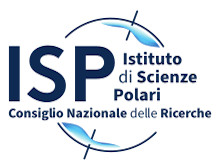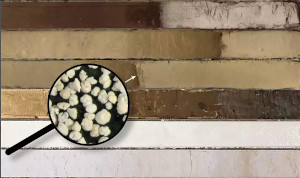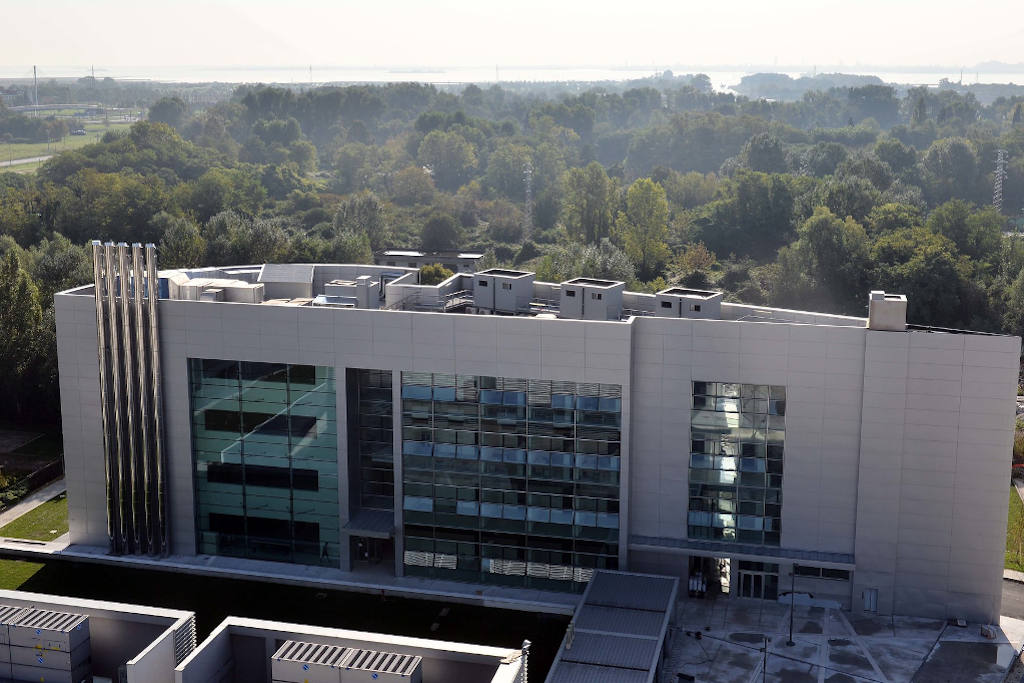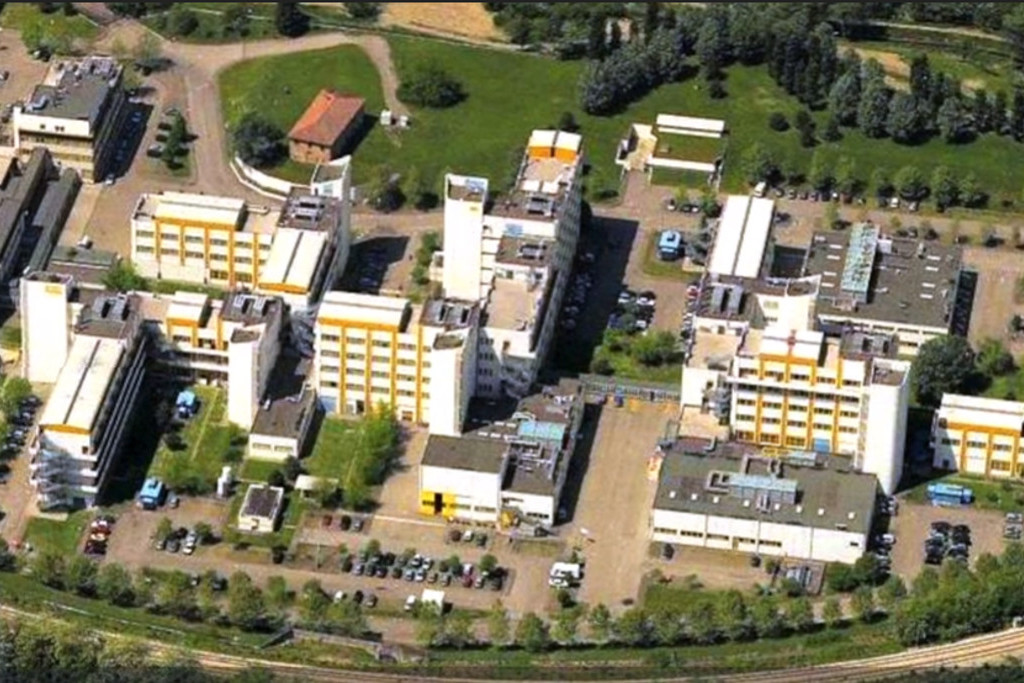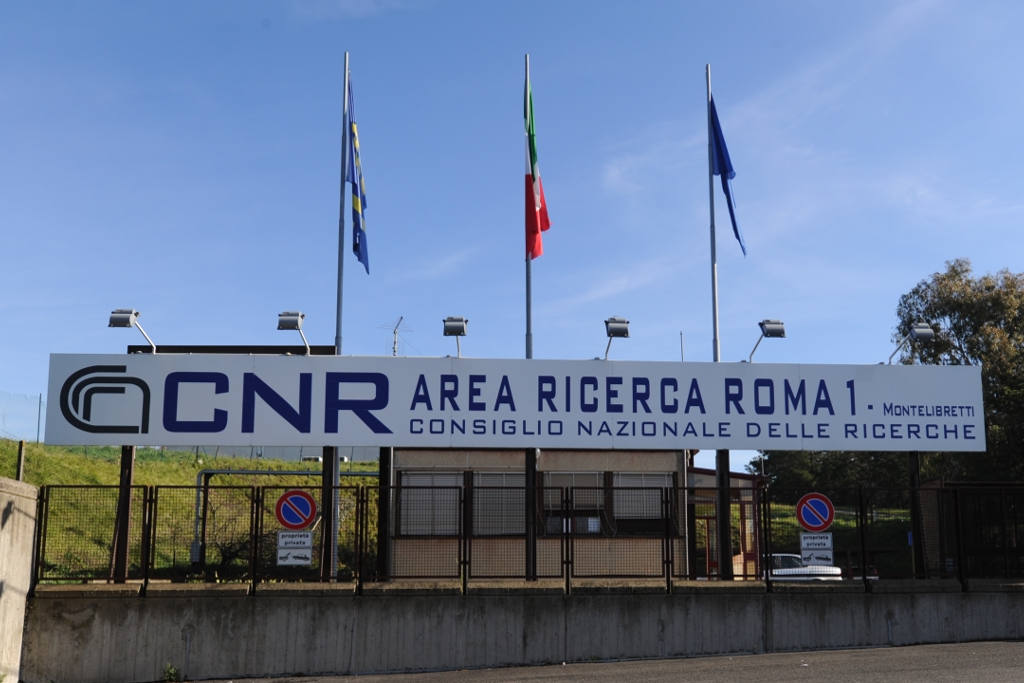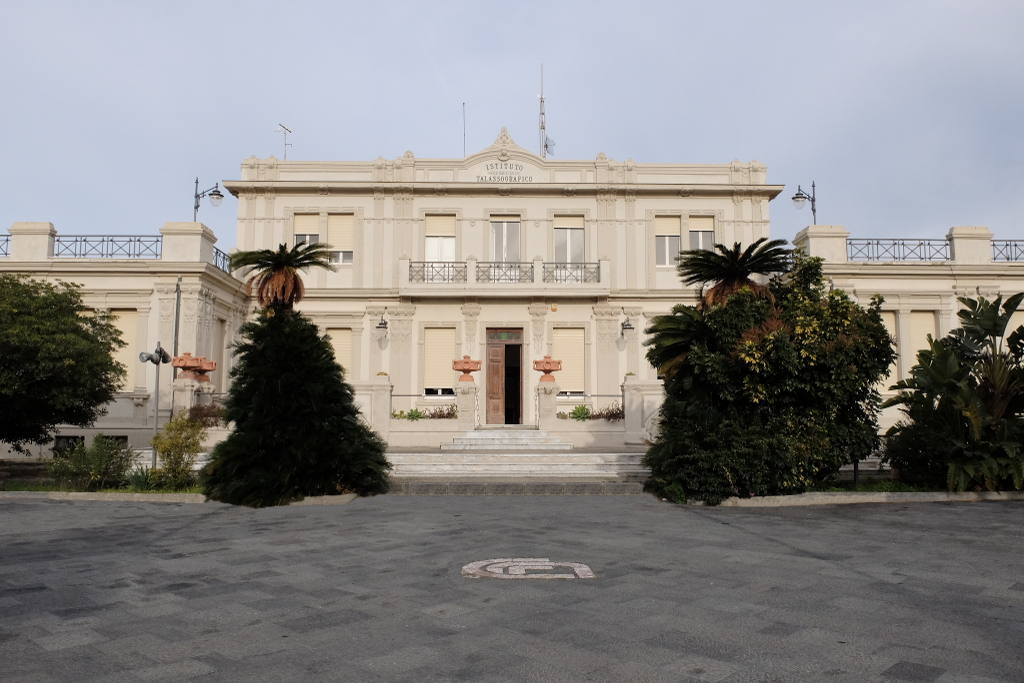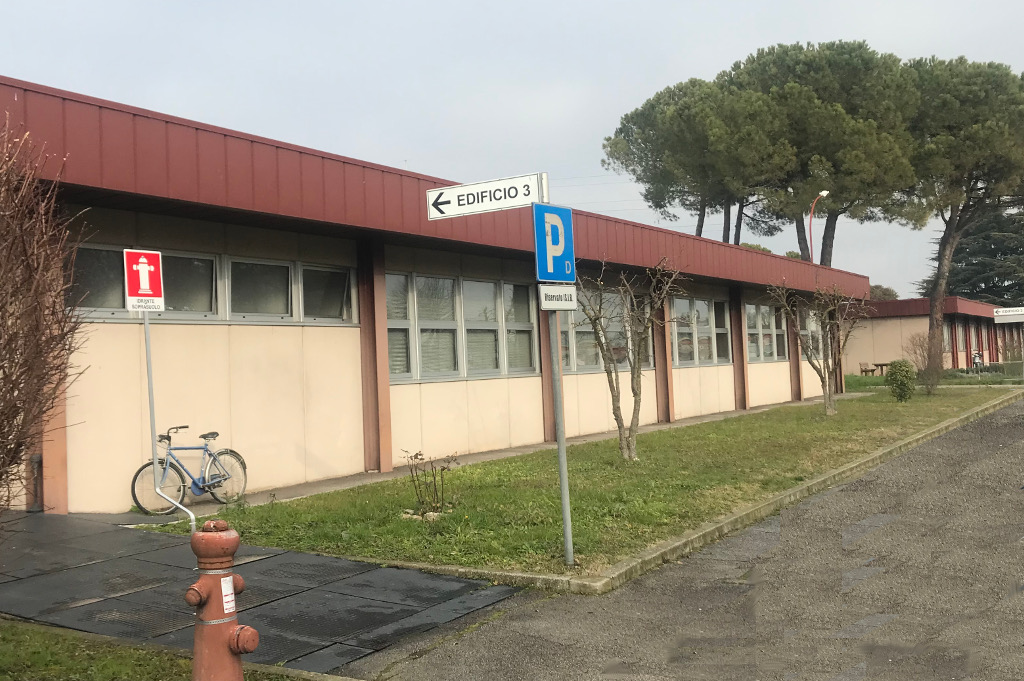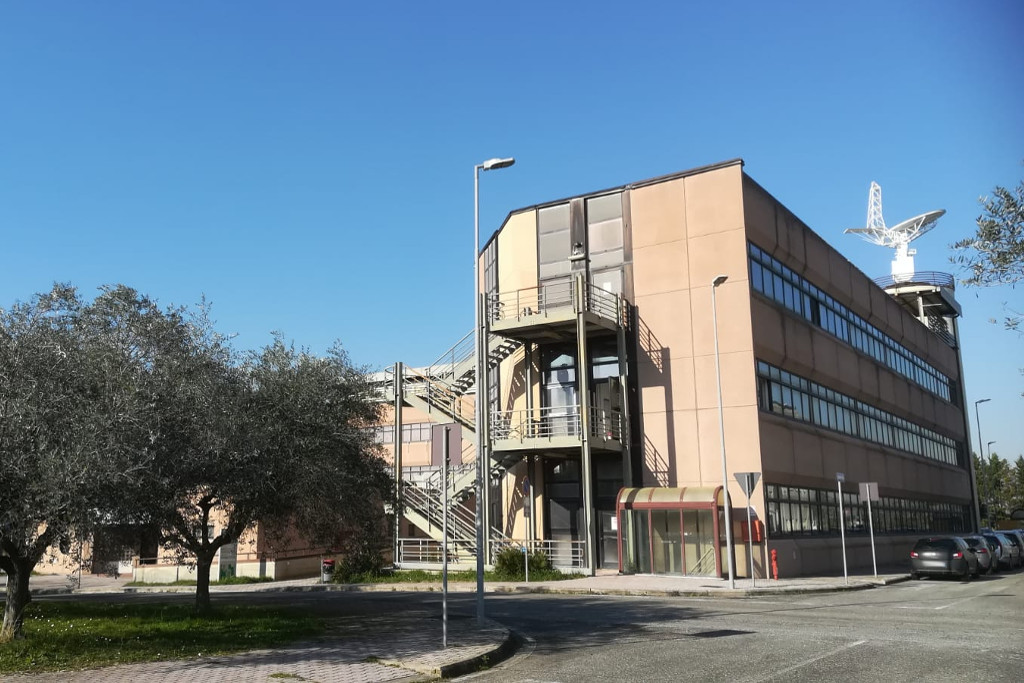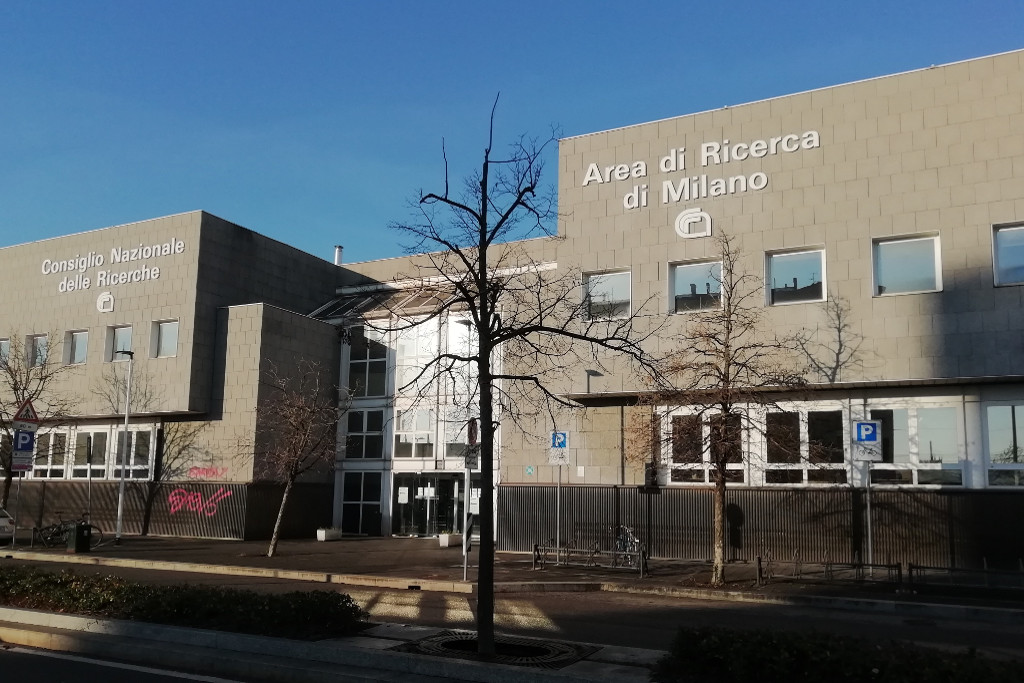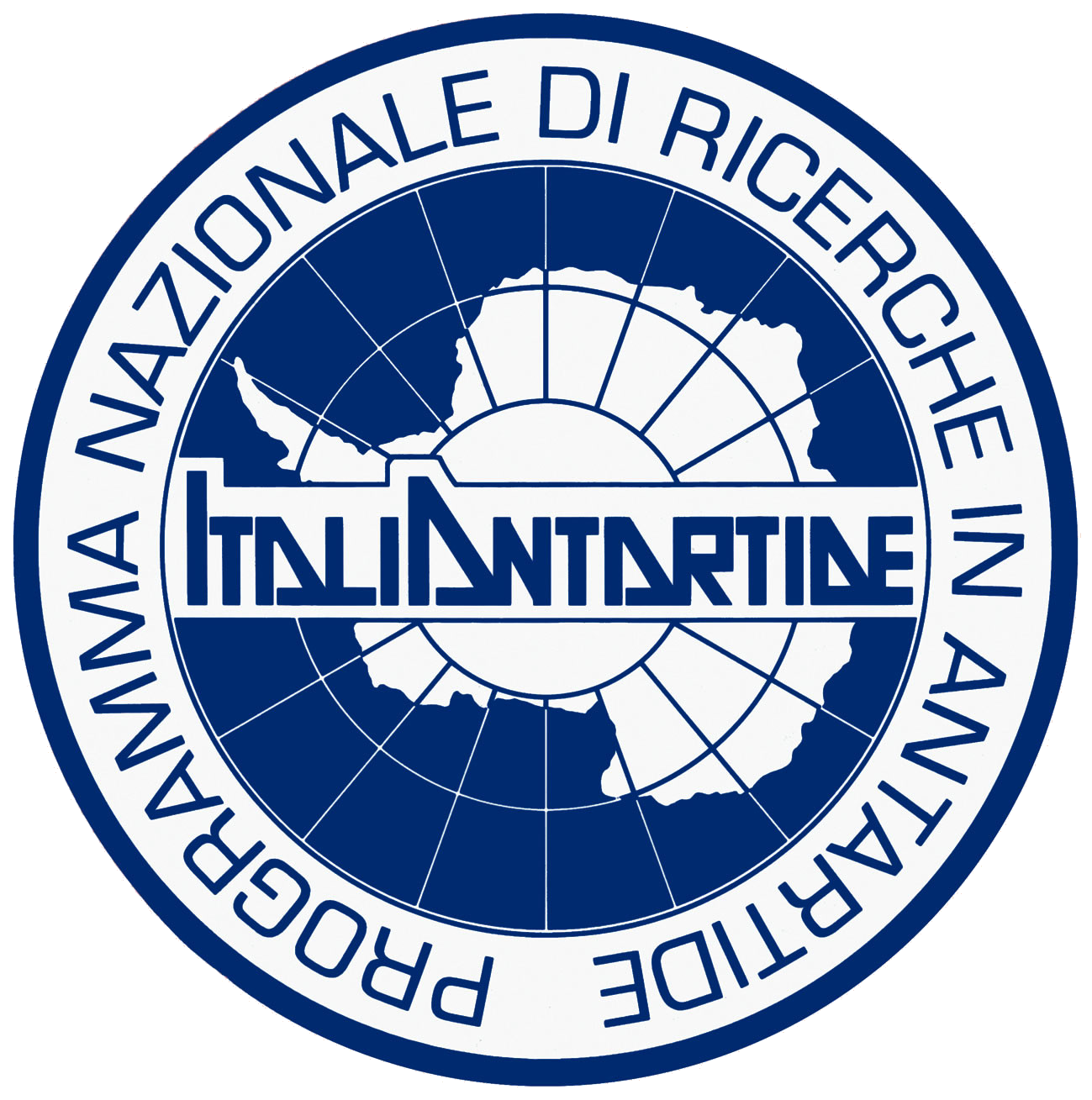Petteni Agnese
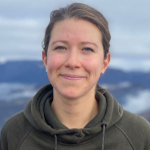 Graduated in Sciences and Technologies for Environment and Landscape at the University of Milano Bicocca, I am currently a PhD candidate in Polar Sciences at Ca' Foscari University of Venice. My research project focuses on water isotopes analysis of surface snow and Antarctic ice cores for reconstructing past temperatures. I have collaborated with CNR-ISP in Venice on developing Continuous Flow Analysis coupled with Cavity Ring Down Spectrometer system for continuous chemical and isotopic analysis. Additionally, I have contributed to instrument management and maintenance at the Dirigibile Italia station in Svalbard (Ny-Ålesund) during the winter season, and participated in the Ice Memory project by analyzing an alpine ice core. Currently, I am affiliated with CNR-ISP for cutting the Antarctic ice core retrieved from Little Dome C through the Beyond EPICA project.
Graduated in Sciences and Technologies for Environment and Landscape at the University of Milano Bicocca, I am currently a PhD candidate in Polar Sciences at Ca' Foscari University of Venice. My research project focuses on water isotopes analysis of surface snow and Antarctic ice cores for reconstructing past temperatures. I have collaborated with CNR-ISP in Venice on developing Continuous Flow Analysis coupled with Cavity Ring Down Spectrometer system for continuous chemical and isotopic analysis. Additionally, I have contributed to instrument management and maintenance at the Dirigibile Italia station in Svalbard (Ny-Ålesund) during the winter season, and participated in the Ice Memory project by analyzing an alpine ice core. Currently, I am affiliated with CNR-ISP for cutting the Antarctic ice core retrieved from Little Dome C through the Beyond EPICA project.
MoGu
 Title: Formaggi alpini - Le molecole del gusto
Title: Formaggi alpini - Le molecole del gusto
Acronym: MoGu
Research Unit Leader ISP: Jacopo Gabrieli
Leading Institution: Federazione provinciale Coldiretti Belluno
Funding: Interreg V-A Italia – Austria 2014–2020: CLLD-strategia Dolomiti Live - progetto medio n. ITAT4042
Period of activity: 1 June 2018 - 30 June 2022
Biscaro Enrico
 PhD student in Polar Sciences at Ca' Foscari University of Venice, where he previously obtained a Master's Degree in Environmental Sciences. His research project aims to understand if in the recent period Svalbard has really changed their climatic regime defining the potential associated consequences.
PhD student in Polar Sciences at Ca' Foscari University of Venice, where he previously obtained a Master's Degree in Environmental Sciences. His research project aims to understand if in the recent period Svalbard has really changed their climatic regime defining the potential associated consequences.
SCAR Plastic Action Group Infographic Competition
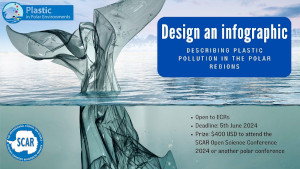 Competition: design an infographic describing plastic pollution in polar regions
Competition: design an infographic describing plastic pollution in polar regions
The SCAR Plastic Action Group (Plastic-AG) announces a competition for Early Career Researchers (ECRs) to create an infographic describing plastic pollution in polar regions. The infographic should synthetise available scientific literature and visualize data about plastic pollution in polar regions (in the Arctic and/or Antarctica), including micro- and nanoplastics, to represent the latest advancements in polar research, including key concerns for polar ecosystems.
Deadline extended to 15th June 2024
Guglielmo Letterio
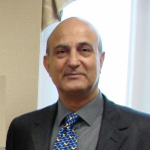 Since 1990 he is full professor of Ecology at the Faculty of Science of the University of Messina (Italy). General Secretary in the following NATO courses coordinated by Dr Trevor Platt, Halifax, Canada: (a) Lipari Island, Italy (12-24 October 1980) on Physiological ecology of Phytoplankton, (b) Bombannes (Bordeaux, France 12-20 May 1982) on Flows of energy and materials in marine ecosyistems: theory and practice, (c) S. Miniato, Italy (1-7 October 1985) on Physiological Ecology of photosynthetic Picopl9ankton in the Ocean. From 1990 to 2002, Italian Delegate to the Scientific Commission of the CCAMLR (Commission for the Conservation of Antarctic Marine Living Resources, Hobart (Tasmania, Australia). Over 60 months accumulated research experience at sea, including the following PNRA Italian Antarctic Expeditions as Principal Investigator: III Exp. (Terra Nova Bay Ecosystem,1987-88), V (South Pacific Sector,1989-90), X ROSSMIZE (Ross Sea Marginal Ice Zone Ecology,1994-95), XIII PIPEX (Pack Ice Plankton Expedition,1997-98), XV PIED (Pack Ice Ecosystem Dynamics 1999-2000), XX SEAROWS (Sea ice Ecology in the Antarctic: ROss and Weddell Seas) on the Polar Queen, Cariboo, Italica (1987-2002), Peri-Antarctic Oceanographic Expeditions in the Strait of Magellan I (1991) and II (1995), and one Arctic canadian cruise by N/R Hudson (1980). He has been Scientific Responsible of the Operative Unit Zooplankton and Micronekton in the following European projects: VECTOR, RITMARE, COCONET, MARINE STRATEGY. From 1968 to now, his research activity has been continuously addressed to issues on the zooplankton and micronekton ecology and biodiversity. Its main fields of study concern: (a) spatio-temporal distribution and daily vertical migrations (DVM) of marine zooplankton and micronekton communities in the Mediterranean and Polar ecosystems, in relation to the physical, chemical and biological water mass structure) (b) brackish environments functioning and biological response to stressor variables, (c) functioning of the coastal and pelagic food chain, with particular regard to the role of euphausiid and mesopelagic fish in the Deep Scattering Layer (DSL) (d) zooplankton role in the carbon cycle, (e) particles size spectrum (OPC) in the study of aquatic ecosystems (f) effects of climate change on the biology and ecology of Antarctic sea-ice and free water zooplankton communities. During 18 PNRA Antarctic expeditions (1987-2018) in Terra Nova Bay, Ross Sea and South Pacific Sector in free water and pack-fast-ice he collected about 6000 samples which are part of the zooplankton and micronekton collection laboratory of the University of Messina. In addition to the classic mesozooplankton and micronekton such as WP2, Indian Ocean Standard Net (IOSN), Bongo 40, IKMT, PHN, advanced electronic multinet are part of its field instrumentation such as BIONESS (1 m2) with 12 nets, MININESS (0.25 m2) with 10 nets 200, 500 and 1000 um, MICRONESS with 4 100 um nets, equipped with a multiparametric probe seabird 11 plus, fluorescence sensor and Optical Plankton Counter (OPC).
Since 1990 he is full professor of Ecology at the Faculty of Science of the University of Messina (Italy). General Secretary in the following NATO courses coordinated by Dr Trevor Platt, Halifax, Canada: (a) Lipari Island, Italy (12-24 October 1980) on Physiological ecology of Phytoplankton, (b) Bombannes (Bordeaux, France 12-20 May 1982) on Flows of energy and materials in marine ecosyistems: theory and practice, (c) S. Miniato, Italy (1-7 October 1985) on Physiological Ecology of photosynthetic Picopl9ankton in the Ocean. From 1990 to 2002, Italian Delegate to the Scientific Commission of the CCAMLR (Commission for the Conservation of Antarctic Marine Living Resources, Hobart (Tasmania, Australia). Over 60 months accumulated research experience at sea, including the following PNRA Italian Antarctic Expeditions as Principal Investigator: III Exp. (Terra Nova Bay Ecosystem,1987-88), V (South Pacific Sector,1989-90), X ROSSMIZE (Ross Sea Marginal Ice Zone Ecology,1994-95), XIII PIPEX (Pack Ice Plankton Expedition,1997-98), XV PIED (Pack Ice Ecosystem Dynamics 1999-2000), XX SEAROWS (Sea ice Ecology in the Antarctic: ROss and Weddell Seas) on the Polar Queen, Cariboo, Italica (1987-2002), Peri-Antarctic Oceanographic Expeditions in the Strait of Magellan I (1991) and II (1995), and one Arctic canadian cruise by N/R Hudson (1980). He has been Scientific Responsible of the Operative Unit Zooplankton and Micronekton in the following European projects: VECTOR, RITMARE, COCONET, MARINE STRATEGY. From 1968 to now, his research activity has been continuously addressed to issues on the zooplankton and micronekton ecology and biodiversity. Its main fields of study concern: (a) spatio-temporal distribution and daily vertical migrations (DVM) of marine zooplankton and micronekton communities in the Mediterranean and Polar ecosystems, in relation to the physical, chemical and biological water mass structure) (b) brackish environments functioning and biological response to stressor variables, (c) functioning of the coastal and pelagic food chain, with particular regard to the role of euphausiid and mesopelagic fish in the Deep Scattering Layer (DSL) (d) zooplankton role in the carbon cycle, (e) particles size spectrum (OPC) in the study of aquatic ecosystems (f) effects of climate change on the biology and ecology of Antarctic sea-ice and free water zooplankton communities. During 18 PNRA Antarctic expeditions (1987-2018) in Terra Nova Bay, Ross Sea and South Pacific Sector in free water and pack-fast-ice he collected about 6000 samples which are part of the zooplankton and micronekton collection laboratory of the University of Messina. In addition to the classic mesozooplankton and micronekton such as WP2, Indian Ocean Standard Net (IOSN), Bongo 40, IKMT, PHN, advanced electronic multinet are part of its field instrumentation such as BIONESS (1 m2) with 12 nets, MININESS (0.25 m2) with 10 nets 200, 500 and 1000 um, MICRONESS with 4 100 um nets, equipped with a multiparametric probe seabird 11 plus, fluorescence sensor and Optical Plankton Counter (OPC).
Research results are documented in more than 240 papers on national and international peer journals. Editor of these books: Atlas of Marine Zooplankton Strait of Magellan I Copepods (1995) and II Amphipods, Mysids, Euphausiids, Ostracods, Chaetognaths, Springer Verlag (1996); Ross Sea Ecology, Springer Verlag 2000; Mediterranean Ecosystems Structure and Processes, Springer Verlag (2001). Editor of the Research Topic "Ecology of Marine Zooplankton and Micronekton in Polar and Sub-Polar Areas” in Frontiers in Marine Biology (2023-2024).
Cryo2Ice Symposium - 23-27 September 2024 - Reykjavik, Iceland
 The Cryo2Ice Symposium focuses on work that makes use of CryoSat-2 or ICESat-2 or a combination of both satellites.
The Cryo2Ice Symposium focuses on work that makes use of CryoSat-2 or ICESat-2 or a combination of both satellites.
Missions Status: including CryoSat-2 and ICESat-2 satellite systems, sensors, and data operations, calibration and validation. Sea Ice: including lead detection, snow loading, sea ice freeboard, roughness, thickness, dynamics and thermodynamics. Ice Sheets and Ice Shelves: including long-term, seasonal, and episodic changes in ice sheet, ice shelf, and iceberg elevation, thickness, and mass, ice sheet grounding line migration, and iceberg calving, and subglacial lakes and hydrology. Mountain Glaciers and Ice Caps: including long-term, seasonal, and episodic changes in elevation, thickness, and mass. Oceans and hydrology: including polar and coastal oceans, regional and global sea level rise, marine gravity, and land hydrology. Synergies and follow-on missions: including planned and future missions that build on the heritage of polar altimetry.
Pulimeno Simone
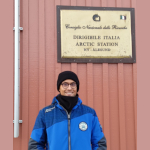 Graduated in Analysis and Management of the Environment from the University of Bologna, he began his collaboration with the Institute of Polar Sciences in 2019, conducting a study on identifying biomass burning events in Ny-Ålesund between 2010 and 2020. Currently a PhD student in Polar Sciences at Ca' Foscari University of Venice, he works at the ISP in Bologna. He mainly focuses on studying the optical and physical properties of atmospheric particulate matter, with a special focus on the Arctic region. He uses passive techniques like solar and lunar photometry, combining them with in-situ measurements of the scattering and absorption coefficients of solar radiation by aerosols.
Graduated in Analysis and Management of the Environment from the University of Bologna, he began his collaboration with the Institute of Polar Sciences in 2019, conducting a study on identifying biomass burning events in Ny-Ålesund between 2010 and 2020. Currently a PhD student in Polar Sciences at Ca' Foscari University of Venice, he works at the ISP in Bologna. He mainly focuses on studying the optical and physical properties of atmospheric particulate matter, with a special focus on the Arctic region. He uses passive techniques like solar and lunar photometry, combining them with in-situ measurements of the scattering and absorption coefficients of solar radiation by aerosols.
Avviso di Seminario - Neural network models for climate and pollution applications in the Arctic - 2 maggio 2024
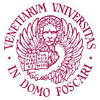 Data: 02/05/2024, Ora: 15:45
Data: 02/05/2024, Ora: 15:45
Luogo: Auditorium Danilo Mainardi - Campus Scientifico Ca' Foscari - (VE) UniveZoom
Meeting ID: 868 6224 7416 Passcode: g62GA1
Presenta: Antonello Pasini,CNR - IIA
Organizzatore: Carlo Barbante (Dottorato in Scienze Polari)
Abstract: The climate system has always been studied by means of dynamic models that use our theoretical knowledge of the functioning of its subsystems. Recently, however, data-driven analysis methods have joined them in an alternative or complementary way. In this seminar we will introduce neural network modeling for climate applications and show some of its uses in this field, from attribution of recent global warming to downscaling and local future projections, to forecasting PM10 in the Arctic.
2° Convegno Istituto di Scienze Polari - La ricerca polare: tematiche attuali e prospettive future 23-24 Aprile 2024 - Bologna
 Il 23 e 24 aprile 2024 si è tenuto presso l’Area della Ricerca del CNR di Bologna il 2° Convegno dell’Istituto di Scienze Polari (CNR-ISP) La ricerca polare: tematiche attuali e prospettive future.
Il 23 e 24 aprile 2024 si è tenuto presso l’Area della Ricerca del CNR di Bologna il 2° Convegno dell’Istituto di Scienze Polari (CNR-ISP) La ricerca polare: tematiche attuali e prospettive future.
Nella 1° giornata, aperta con i saluti del Direttore Carlo Barbante, sono state presentate le attività di ricerca che si svolgono nell’ambito delle 5 Aree Tematiche con un aggiornamento sullo stato di avanzamento e sulle prospettive future.
Nella 2° giornata è stato dato spazio alle attività che vedono impegnati i ricercatori e il personale amministrativo ISP in diversi ambiti, dai Progetti PNRR, ai Gruppi di Lavoro a supporto dell’Istituto, all’accesso e gestione della Base Dirigibile Italia, alla costituzione del Polar Hub ed, infine, alla gestione amministrativa. La galleria dei poster è stata allestita con 35 lavori.
Agenda
- DOI:10.53132/CNR-ISP.2024.BOOK.ABS.15 - Book of Abstract (italiano)
Presentazioni
01 - AT1: Contaminanti e Ecosistemi
DOI:10.53132/CNR-ISP.2024.OPR.ECO.VAR.38
02 - AT2: Paleoclima e Paleoambienti
DOI:10.53132/CNR-ISP.2024.OPR.PAL.VAR.39
03 - AT3: Cambiamenti dei Sistemi Polari
DOI:10.53132/CNR-ISP.2024.OPR.GCC.VAR.40
04 - AT4: Osservazioni della Terra e Modellistica
DOI:10.53132/CNR-ISP.2024.OPR.MOD.VAR.41
05 - AT5: Bioscienze
DOI:10.53132/CNR-ISP.2024.OPR.BIO.VAR.42
06 - The European Marine Biological Resource Centre-Italy (EMBRC-IT) e il PNRR EMBRC-Unlocking the Potential for Health and Food from the seas (EMBRC-UP) una overview
DOI:10.53132/CNR-ISP.2024.OPR.BIO.EUR.43
07 - EMBRC-Unlocking the Potential for Health and Food from the seas (EMBRC-UP) il contributo di ISP
DOI:10.53132/CNR-ISP.2024.OPR.BIO.OCM.44
08 - Banche dati polari e Italian Integrated Environmental Research Infrastructures System (ITINERIS) il contributo di ISP
DOI:10.53132/CNR-ISP.2024.OPR.VAR.ITA.45
09 - Sicilian Micro and Nano Technology Research and Innovation Center (SAMOTHRACE) il contributo di ISP
DOI:10.53132/CNR-ISP.2024.OPR.TECH.ITA.46
10 - National Biodiversity Future Center (NBFC) il contributo di ISP
DOI:10.53132/CNR-ISP.2024.OPR.BIO.ITA.47
11 - La gestione amministrativa di ISP avanzamenti e criticità
12 - Del GdL Comunicazione e la perpetua ricerca di informazioni
DOI:10.53132/CNR-ISP.2024.OPR.COM.VAR.48
13 - Gruppo di Lavoro Relazioni Internazionali di ISP avanzamenti e prospettive future
DOI:10.53132/CNR-ISP.2024.OPR.VAR.49
14 - Dirigibile Italia statistiche, accesso e gestione della Base
DOI:10.53132/CNR-ISP.2024.OPR.VAR.EUR.50
15 - Il Polar Hub
Aumento dell'ossigenazione dell'oceano tropicale durante un episodio geologico di rapido riscaldamento globale
5 Aprile 2024
Un recente studio pubblicato su Science, condotto da un team internazionale di ricercatori che ha coinvolto l'Italia attraverso l'Istituto di Scienze Polari (CNR-ISP) e l’Istituto di Scienze Marine (CNR-ISMAR), ha dimostrato che l'oceano tropicale ha guadagnato ossigeno durante il Massimo Termico del Paleocene-Eocene (comunemente chiamato PETM). Durante questo breve intervallo di tempo nella storia della Terra, avvenuto circa 56 milioni di anni fa, le temperature medie sono aumentate fino a sei gradi in poche migliaia di anni. Simone Moretti (CNR-ISP) - DOI: /10.1126/science.adh4893
Immagine - (sedimenti marini profondi prelevati durante le campagne ODP utilizzati per lo studio. La dimensione dei gusci di foraminiferi fossili e gli isotopi dell’azoto applicati sulla loro matrice carbonatica ha mostrato una ossigenazione degli oceani durante il PET)
HEADQUARTERS - VENEZIA
SECONDARY SITES
Secondary site without administrative duties
Detached Site
 Ministero dell'Universita e Ricerca
Ministero dell'Universita e Ricerca
Programma Ricerche Artico
Programma Nazionale di Ricerca in Antartide
 Ministero degli Affari Esteri e della Cooperazione Internazionale
Ministero degli Affari Esteri e della Cooperazione Internazionale
L'Italia e l’Artico
L’Italia e l’Antartide
CNR-ISP
National Research Council
Institute of Polar Sciences
c/o Scientific Campus - Ca' Foscari University Venice - Via Torino, 155 - 30172 VENEZIA MESTRE (VE)
Phone: +39 041 2348547 - E-mail: protocollo.isp AT pec.cnr.it
Fax: +39 041 2348 549 - Codice Fiscale: 80054330586 - P.I.:02118311006
Unless otherwise indicated, the content of this site is licensed : Attribution Non Commercial Share Alike 4.0 International (CC BY-NC-SA 4.0)
Privacy policy e Cookie policy - Transparent administration (CNR)
